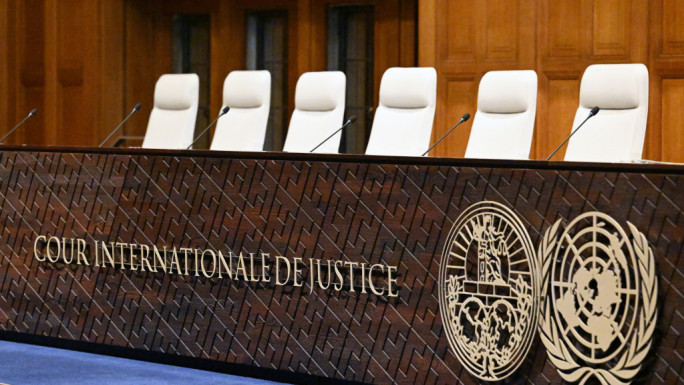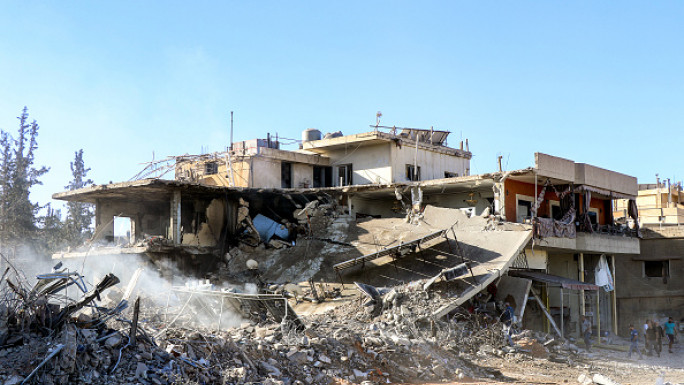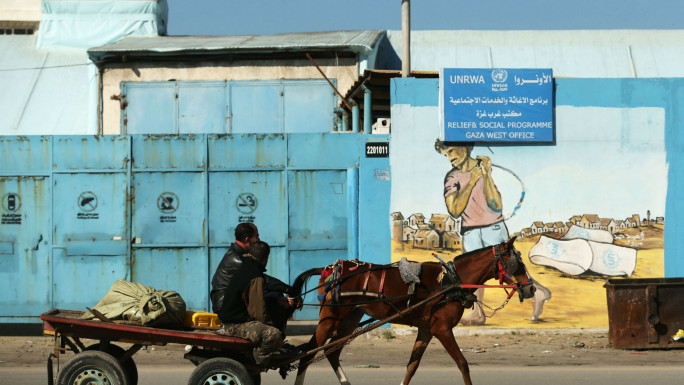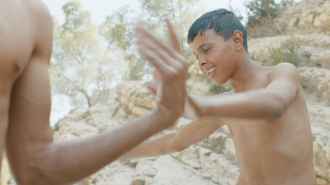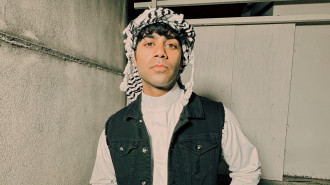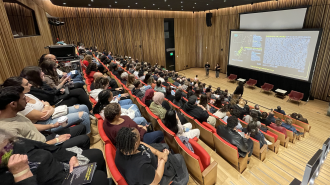
Mashūrah: Muslim voices emerge in Cape Town’s art scene

Mashūrah, which translates to 'consultation' or 'to seek advice', beckons the Islamic tradition of communal consultation as a means of collective spiritual ascension. In Cape Town's Greatmore Studios, the practice lends itself to an exhibition of the same name, that assembled 20 artists whose works consider Muslim voices in South African visual arts.
The exhibition itself acted as an opportunity for solidarity between artists tackling subjects that affect not just Muslims, but those embedded into the Islamic histories and cultural intersections of the region.
"Khan noticed a general hesitancy and discomfort at the idea of Muslim artists exhibiting their work... Islam is a religion that is discouraged from public practice by non-Muslims"
Its curator, Sara Bint Moneer Khan, developed the Mashūrah Arts initiative after moving to South Africa from London in 2015 and noticing a lack of Muslim figures and representation in the South African visual arts circuit. It is the first curated via the initiative and serves as an extension of Khan's PhD study of arts advocacy among Cape Town Muslims. The last time a curator sought to archive the presence of Muslims in South Africa was in the 1994 exhibition, 300 Years: Muslim Art from the Western Cape, at the National Museum in Cape Town.
After the museum's expansion, archival photographs of artwork were lost, marking further erasure. While Khan notes that the loss was accidental, she laments what it represents: yet another blotted aspect of a history impactful South African community.
"By launching and having established this initiative in Cape Town, a major port city at Africa's southern tip, the emphasis is placed on the city's continued connection to, yet disconnect from, the rest of the world," Sara told The New Arab.
"Despite being a historically, politically, and culturally diverse country, my experience of South Africa is that it is noticeably segregated, particularly in Cape Town. More resources and commitment are required for the development of the arts, and this exhibition has served as a catalyst and a conversation starter about what many would consider a gap in the art ecology."
"By launching and having established this initiative in Cape Town, a major port city at Africa's southern tip, the emphasis is placed on the city's continued connection to, yet disconnect from, the rest of the world"
For two years, Khan noticed a general hesitancy and discomfort at the idea of Muslim artists exhibiting their work. Generally, Muslims – and those connected to the religion – are discouraged from collaborative community-building, because Islam is a religion that is discouraged from public practice by non-Muslims.
Beyond an initial hesitation from institutions to display 'Islamic art' due to the political and religious undertones often associated with Muslim artists, Khan considers the philosophical question of Islamic art: what does it mean, and how does it fit – or stand out – within the contemporary art world?
What attributes do we assign traditionally Islamic art, and how can we begin to perceive art from contemporary Muslim artists (and artists working in their periphery) as wholly original, both acknowledging of and untethered to politicised stereotypes while being rooted in the larger multicultural framework of a people? Mashūrah is, in part, a practice in understanding the complexity of these questions.
| Hanna Noor Mahomed, A Postcolonial Probe |
The exhibition acts as a microcosm for these experiences, shrouded in the complex visual and cultural experiences of the exhibition's artists.
Resonances of a post-apartheid, postcolonial state carry tremors of its segregated past, be the first-generation immigrants living in The Cape or Cape Malays – descendants of free and enslaved and Muslims from mostly Indonesia and other South Asian and African countries who lived under Dutch and English sovereignty.
The term itself often encompasses so much of the significant, multi-faceted linguistic and ethnic Muslim populations in South Africa, so it's fitting that the exhibition, in part, pays homage to such hybridity.
| Hasan & Husain Essop, 3 Imams (with figures) |
| Hasan & Husain Essop, Four Fathers |
Homage, in this sense, is both personal and political; it is both historic and of the moment. It is a violinist playing ghost notes for the disenfranchised artists of bygone years and the speculative calligraphic work of 18th-century religious leaders – of poets, activists, and exiles.
Calling on generations of high-skilled Muslim artisans brought to The Cape, the exhibition features commentary on trade, textiles, and the ‘beautified’ domestic spaces and objects rendered useless by their accoutrements.
Conversations on Afro-Arab identities in imagined post-apocalyptic landscapes, the rejection of Africa as a monolithic continent, and the sobering links between South Africa and Palestine, all coincide with subjective lived experiences.
| Kamyar Bineshtarigh, Untitled (Ghazal no. 359, 39, 389, 198) |
| Gulshan Khan, Girl on Carousel |
It is paying tribute to the Islamic communities that campaigned for an artist and his parent's release from jail cells when he was just two years old; it is that same community demanding justice for an anti-apartheid imam whose family never received closure after his death.
The beauty of Mashūrah lies in the richness of these commonalities and junctures, but it also lies in the contemplative, self-reflective, and outward-facing tensions explored by these artists.
The incommodious nature of gendered spaces for one artist recalling a visit to Medinah correspond with photographs of jubilant, visibly Muslim women otherwise made invisible by Western visual culture and media.
The video work of an artist piecing together her mother’s wedding day, as both documentarian and spectator, lends a proverbial hand to the shrouded burial piece reflecting on the certitude of death as a connective force.
| Shameelah Khan, Yawmul-Zafaf (The Wedding Day) |
| Rushda Deaney, Untitled |
Visual documentation of these gendered, often nuanced, experiences transcend the material realm, harkening us back to the geometric language of the universe expressed in traditional Islamic art. Flora, geometry, and line design create a triumvirate celebration of the veils of reality. Here, precision in form is absolute and negative space is just as meaningful as the shapes and figures embellishing gouache on paper.
A metaphysical bridge between these realms exists now, prompting potentiality in communal discourse as a means of collective and personal agency, connecting us to the ever-reflective South Africa of today.
While the exhibition closed on September 30, you can still catch up with the initiative’s future events and projects, both in Cape Town and beyond, on Mashūra’s Instagram page, or see the virtual exhibition catalogue.
Hind Berji is a freelance writer with experience in art reviews and sociopolitical criticism.
Follow her on Twitter: @HindBerji









